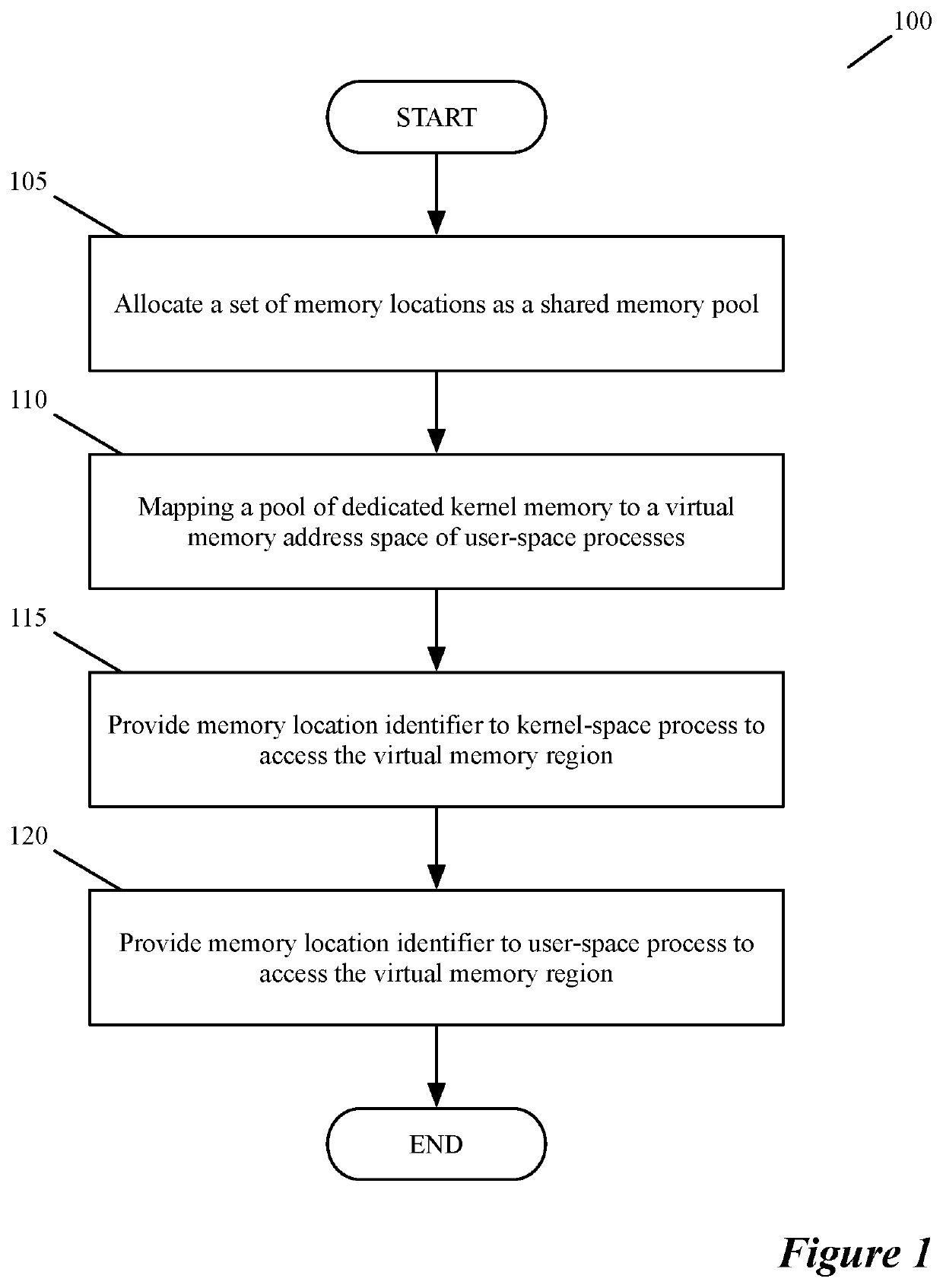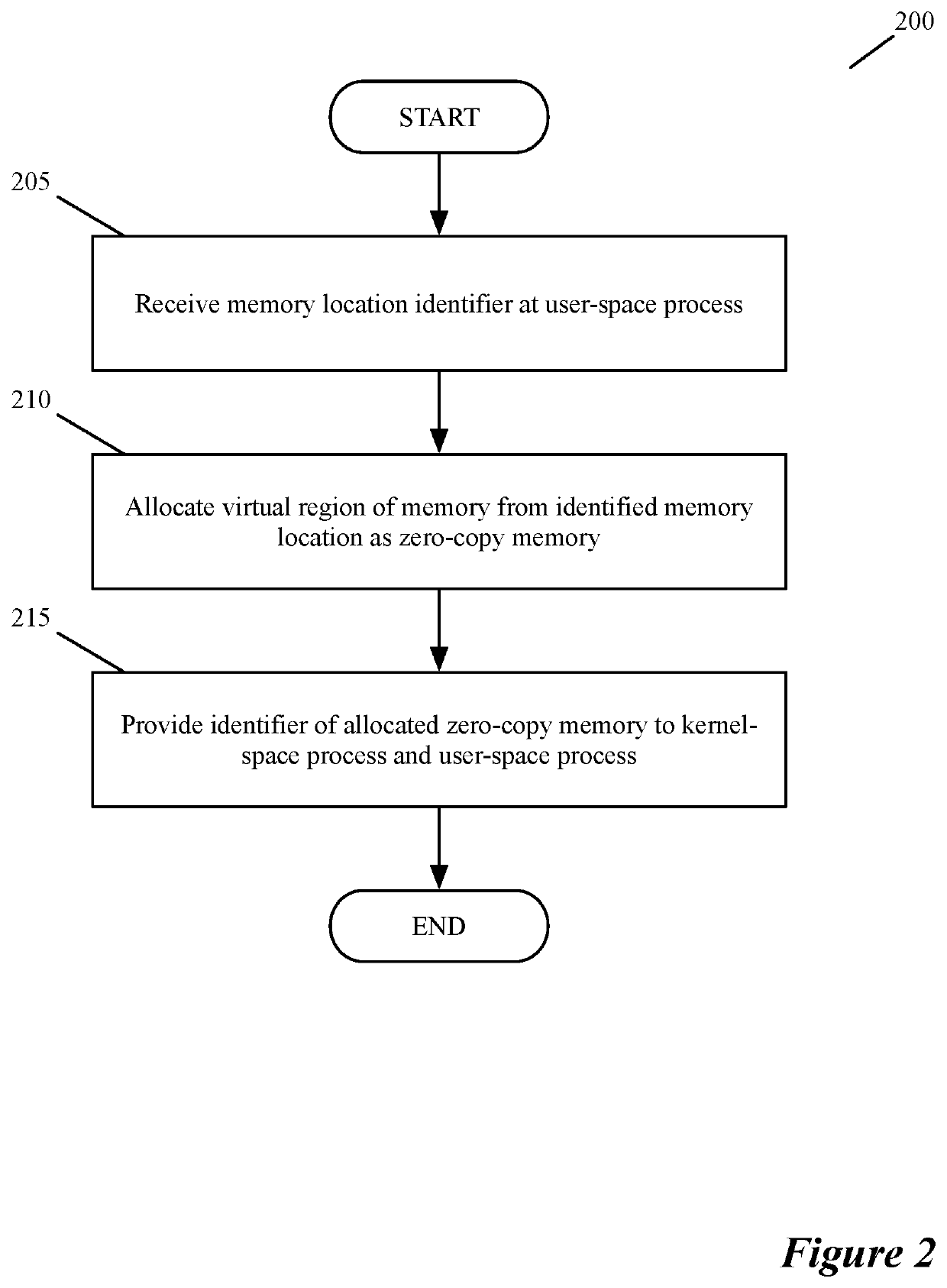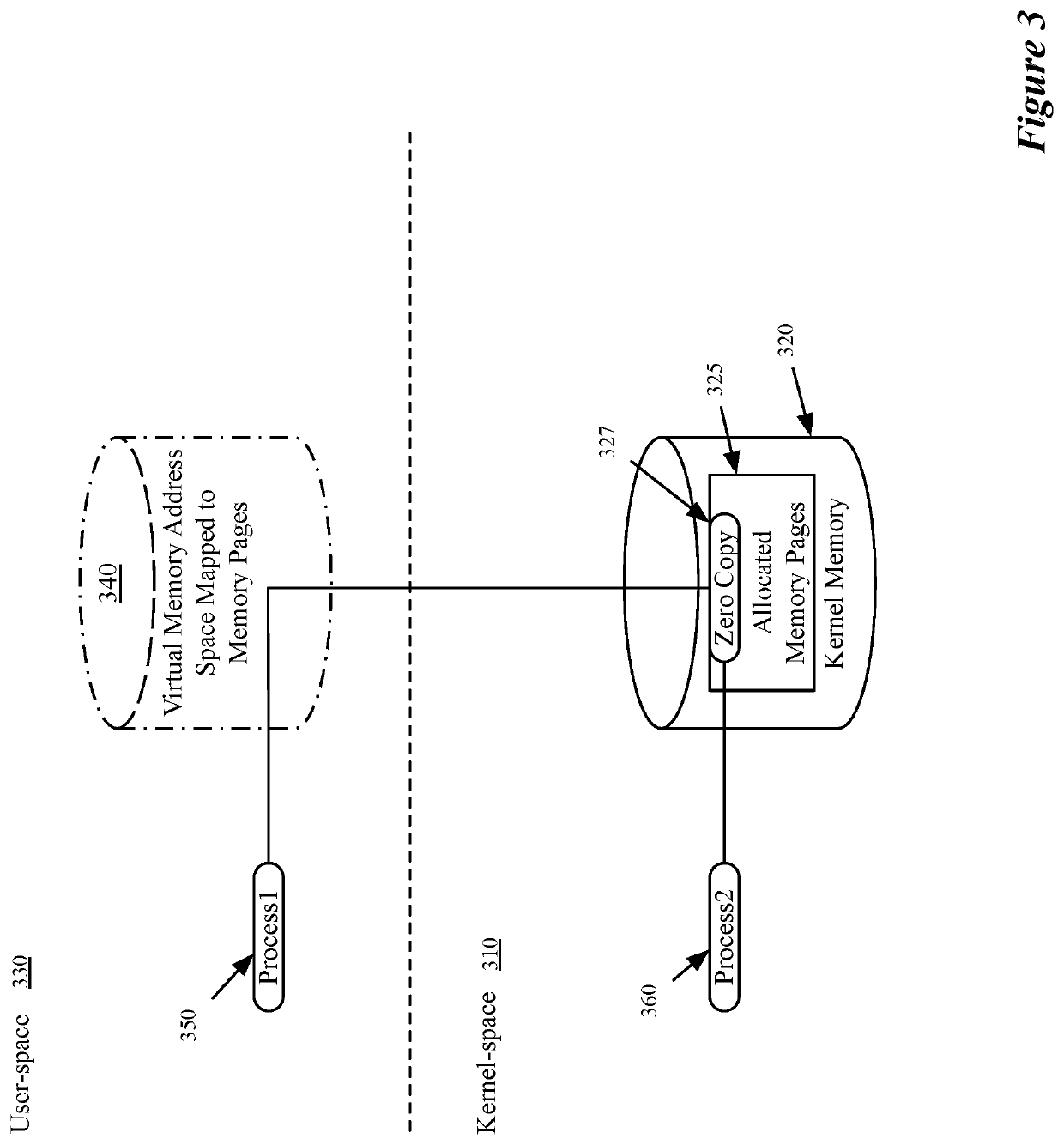Memory allocator for I/O operations
a memory allocator and i/o technology, applied in the field of computing, can solve the problems of performance cost, data transfer from one computer to another takes up a significant amount of computing time, slow down the transmission and/or processing of data,
- Summary
- Abstract
- Description
- Claims
- Application Information
AI Technical Summary
Benefits of technology
Problems solved by technology
Method used
Image
Examples
Embodiment Construction
[0026]In the following detailed description of the invention, numerous details, examples, and embodiments of the invention are set forth and described. However, it will be clear and apparent to one skilled in the art that the invention is not limited to the embodiments set forth and that the invention may be practiced without some of the specific details and examples discussed.
[0027]Modern computers use a bifurcated structure that includes a core operating system (the kernel) and applications that access that kernel operating in a user-space. Some data is used by both the kernel and by applications in the user-space. The prior art copies the data from memory locations used by the kernel to separate memory locations used by applications of the user-space. Unlike that prior art, some embodiments provide a novel method for performing zero-copy operations using a dedicated memory allocator for I / O operations (MAIO). Zero-copy operations are operations that allow separate processes (e.g....
PUM
 Login to View More
Login to View More Abstract
Description
Claims
Application Information
 Login to View More
Login to View More - R&D
- Intellectual Property
- Life Sciences
- Materials
- Tech Scout
- Unparalleled Data Quality
- Higher Quality Content
- 60% Fewer Hallucinations
Browse by: Latest US Patents, China's latest patents, Technical Efficacy Thesaurus, Application Domain, Technology Topic, Popular Technical Reports.
© 2025 PatSnap. All rights reserved.Legal|Privacy policy|Modern Slavery Act Transparency Statement|Sitemap|About US| Contact US: help@patsnap.com



